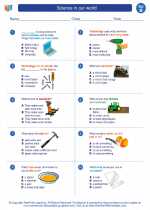Asexual Reproduction
Asexual reproduction is a type of reproduction that involves only one parent and produces offspring that are genetically identical to the parent. This process does not involve the fusion of gametes (sex cells) and is common in many single-celled organisms and some multicellular organisms.
Methods of Asexual Reproduction
There are several methods of asexual reproduction, including:
- Budding: This method involves the growth of a new organism from an outgrowth or bud on the parent organism. The bud eventually detaches and becomes a new individual.
- Binary Fission: This is a common method of asexual reproduction in single-celled organisms, such as bacteria and protists. The organism divides into two equal parts, each of which grows into a new organism.
- Vegetative Propagation: In plants, this method involves the growth of new individuals from specialized structures such as runners, rhizomes, tubers, and bulbs.
- Fragmentation: Some multicellular organisms can reproduce asexually by breaking into fragments, with each fragment developing into a new individual.
Advantages and Disadvantages
Asexual reproduction has both advantages and disadvantages:
- Advantages:
- Efficient and rapid reproduction
- No need to find a mate
- Genetically identical offspring are well-suited to stable environments
- Disadvantages:
- Reduced genetic diversity, which can limit adaptability to changing environments
- Increased susceptibility to diseases and environmental stress
- No genetic recombination to eliminate harmful mutations
Study Guide
To understand asexual reproduction, it's important to focus on the following key points:
- Define asexual reproduction and explain its significance in various organisms.
- Describe and compare the different methods of asexual reproduction, providing examples for each method.
- Discuss the advantages and disadvantages of asexual reproduction, and analyze how these factors impact the survival and evolution of organisms.
- Illustrate the concept of genetic diversity and explain why it is important for the long-term survival of a species.
By mastering these concepts, you will have a solid understanding of asexual reproduction and its implications for the natural world.
.◂Science Worksheets and Study Guides Second Grade. Science in our world
Study Guide Science in our world
Science in our world  Worksheet/Answer key
Worksheet/Answer key Science in our world
Science in our world  Worksheet/Answer key
Worksheet/Answer key Science in our world
Science in our world  Worksheet/Answer key
Worksheet/Answer key Science in our world
Science in our world  Vocabulary/Answer key
Vocabulary/Answer key Science in our world
Science in our world 

 Worksheet/Answer key
Worksheet/Answer key
 Worksheet/Answer key
Worksheet/Answer key
 Worksheet/Answer key
Worksheet/Answer key
 Vocabulary/Answer key
Vocabulary/Answer key

The resources above cover the following skills:
LIFE SCIENCE (NGSS)
Biological Evolution: Unity and Diversity
Students who demonstrate understanding can:
Make observations of plants and animals to compare the diversity of life in different habitats[Clarification Statement: Emphasis is on the diversity of living things in each of a variety of different habitats.] [Assessment Boundary: Assessment does not include specific animal and plant names in specific habitats.]